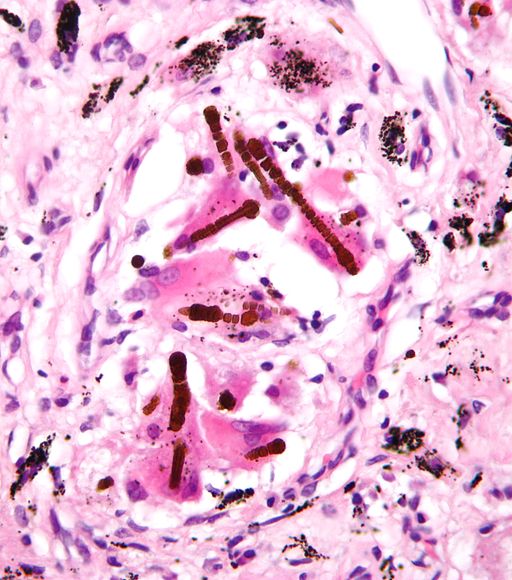Ferruginous body
Contents
Ferruginous body is commonly suggestive of –
A. Berylliosis
B. Asbestosis
C. Siderosis
D. Byssinosis
Which is called as ‘grinder’s disease’ ?
A. Silicosis
B. Asbestosis
C. Siderosis
D. Byssinosis
“Asbestos bodies” are fibers of asbestos coated with
A. Antibodies
B. Phospholipid
C. Iron-rich material
D. Phosphate
Hemosiderin-laden macrophages are indicative –
A. Pulmonary infarction
B. Pulmonary embolism
C. Pulmonary hemorrhage
D. Pulmonary hypertension
Charcot-Leyden crystals indicate marked elevation of
A. Basophils
B. Eosinophils
C. Macrophages
D. Plasma cells
In shorts
Ferruginous bodies and corpora amylacea – often surrounded by macrophages
Charcot-Leyden crystals are associated with – eosinophils
Curschmann spirals result from – inspissated mucus
Ferruginous body

Nephron, CC BY-SA 3.0 https://creativecommons.org/licenses/by-sa/3.0, via Wikimedia Commons





